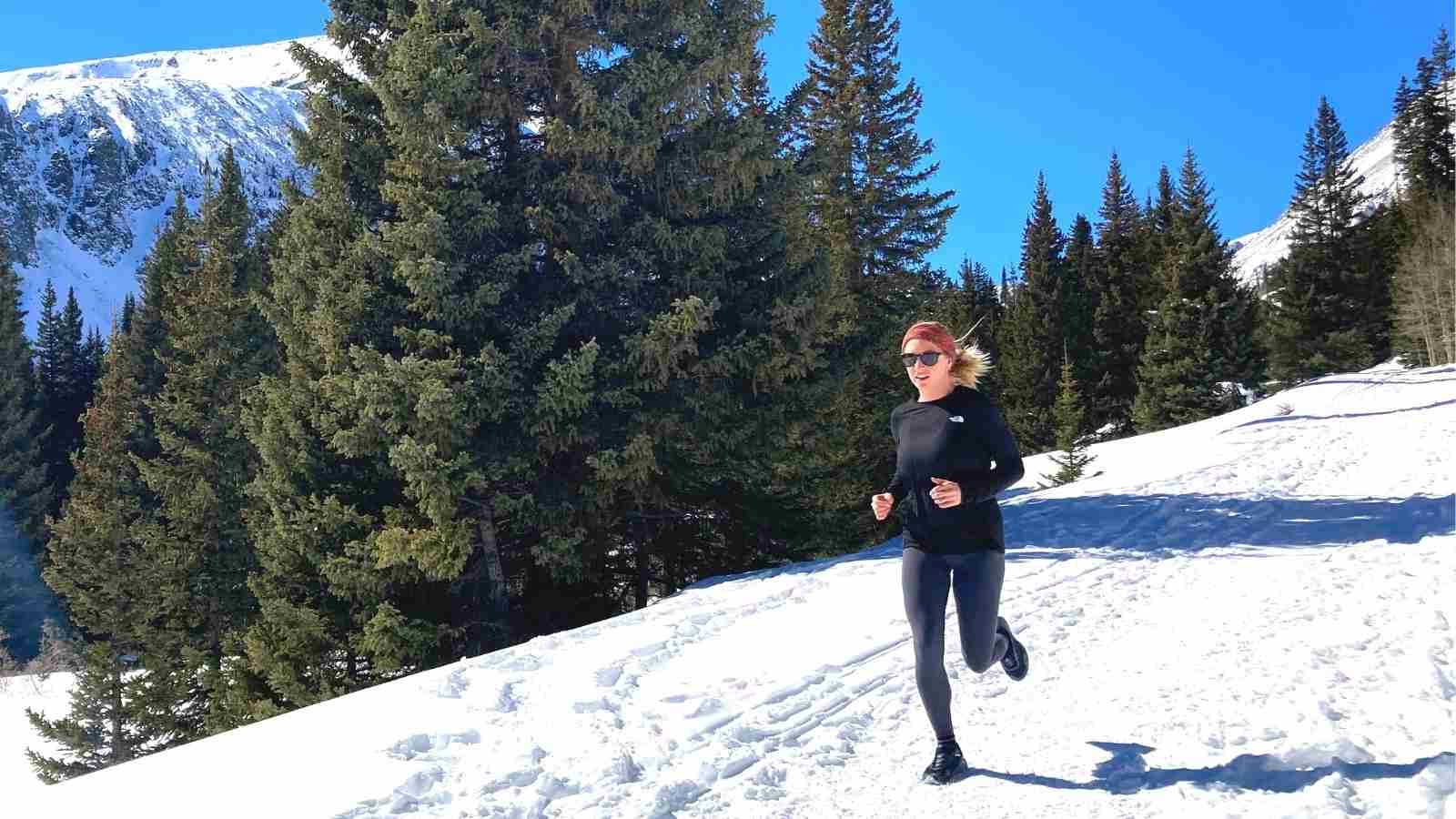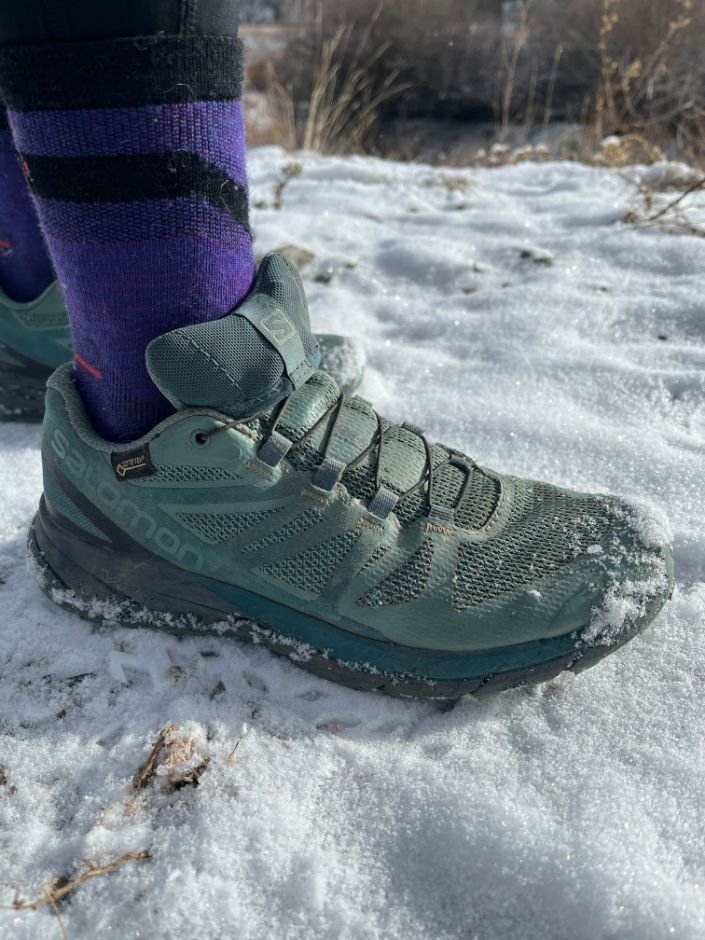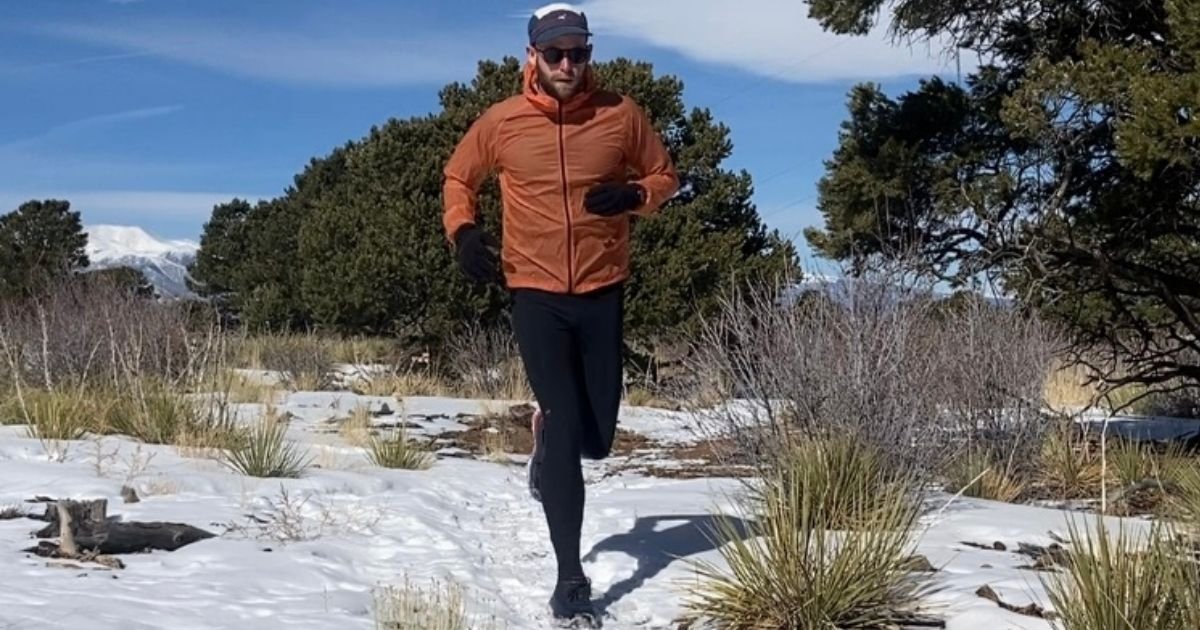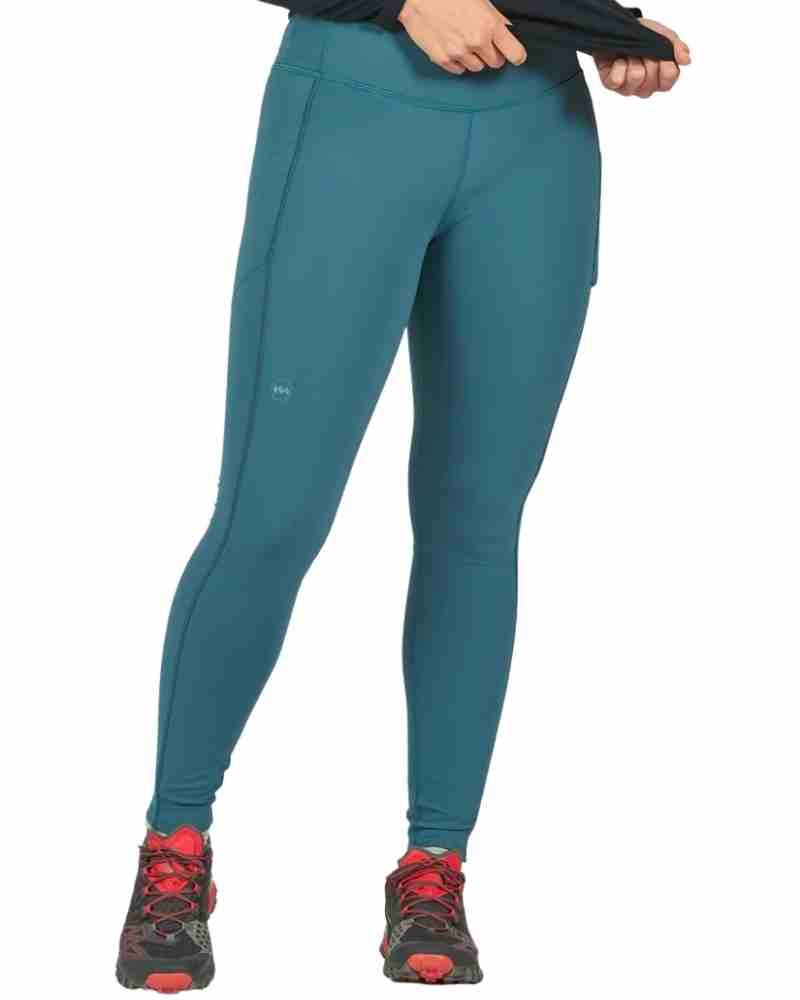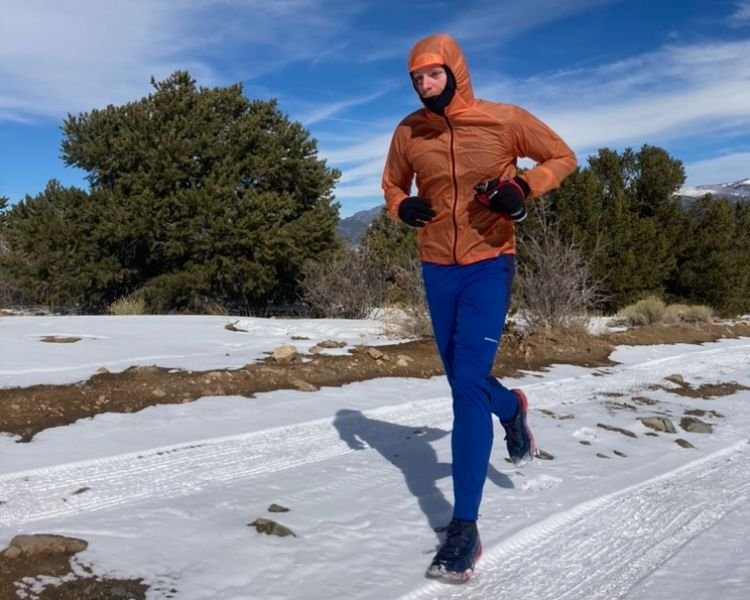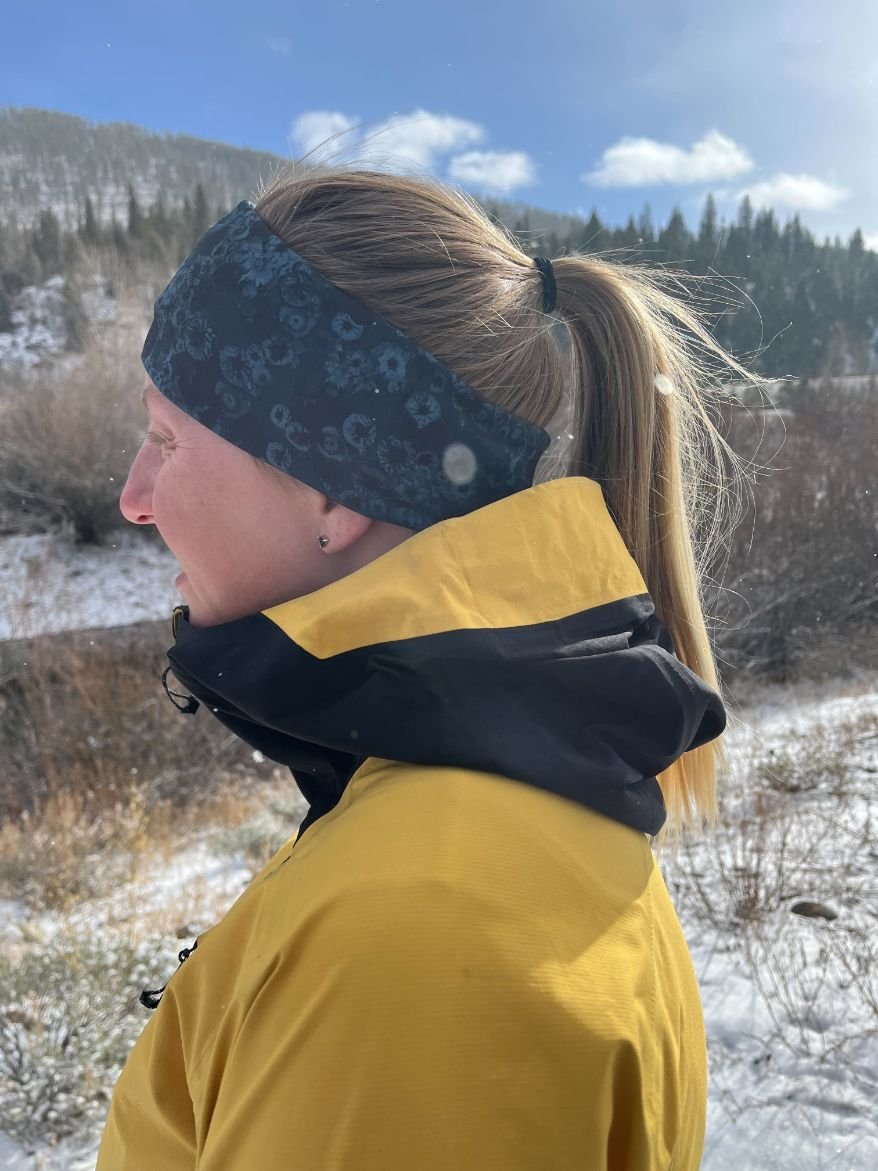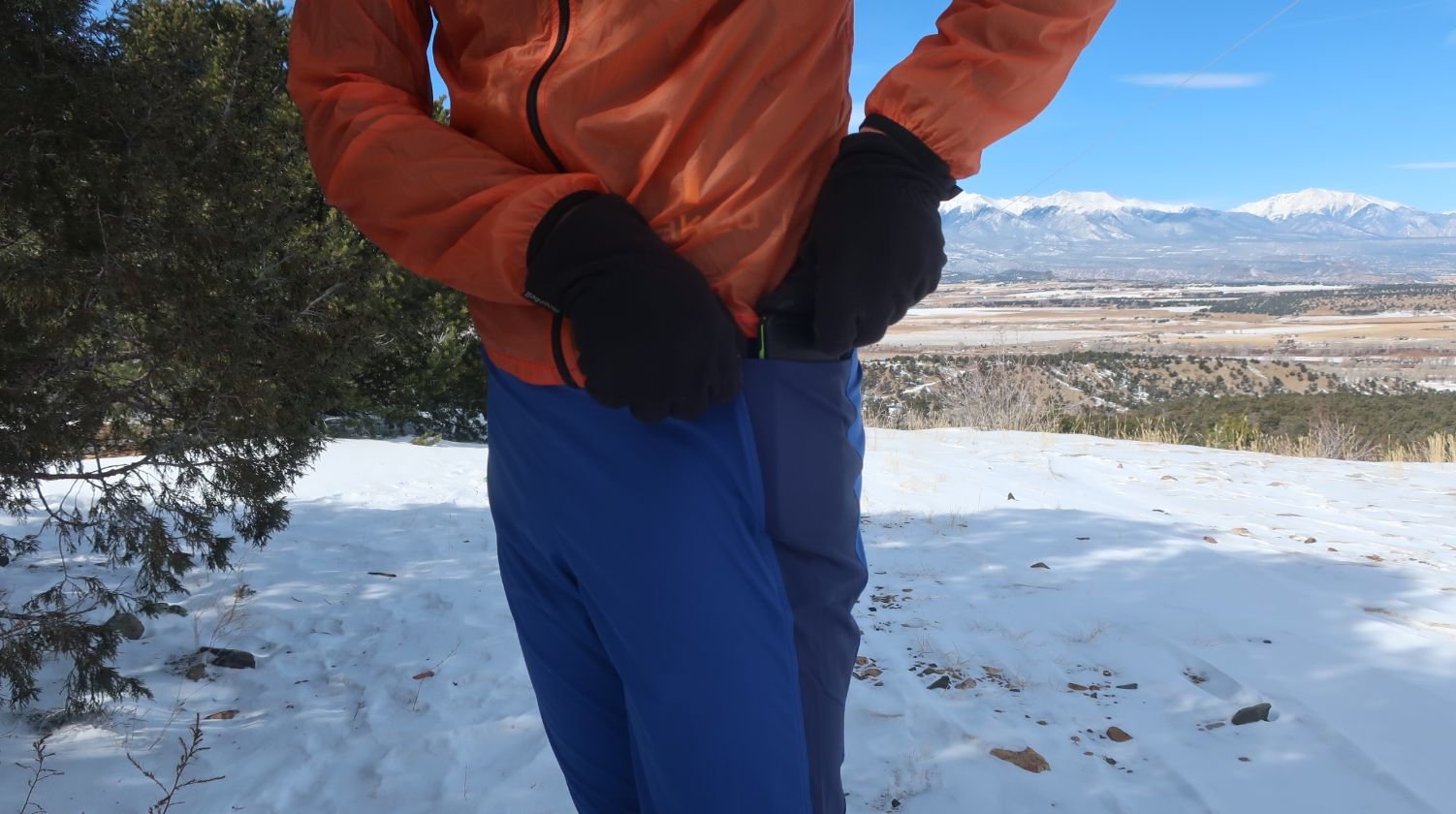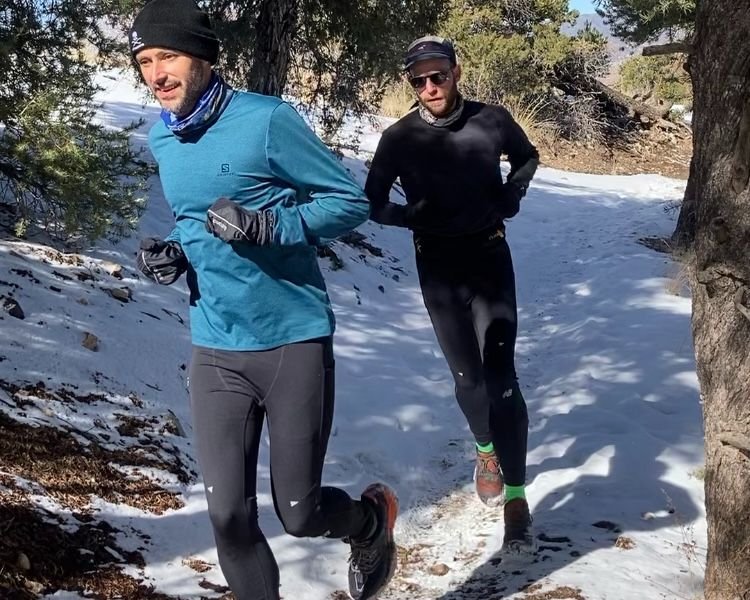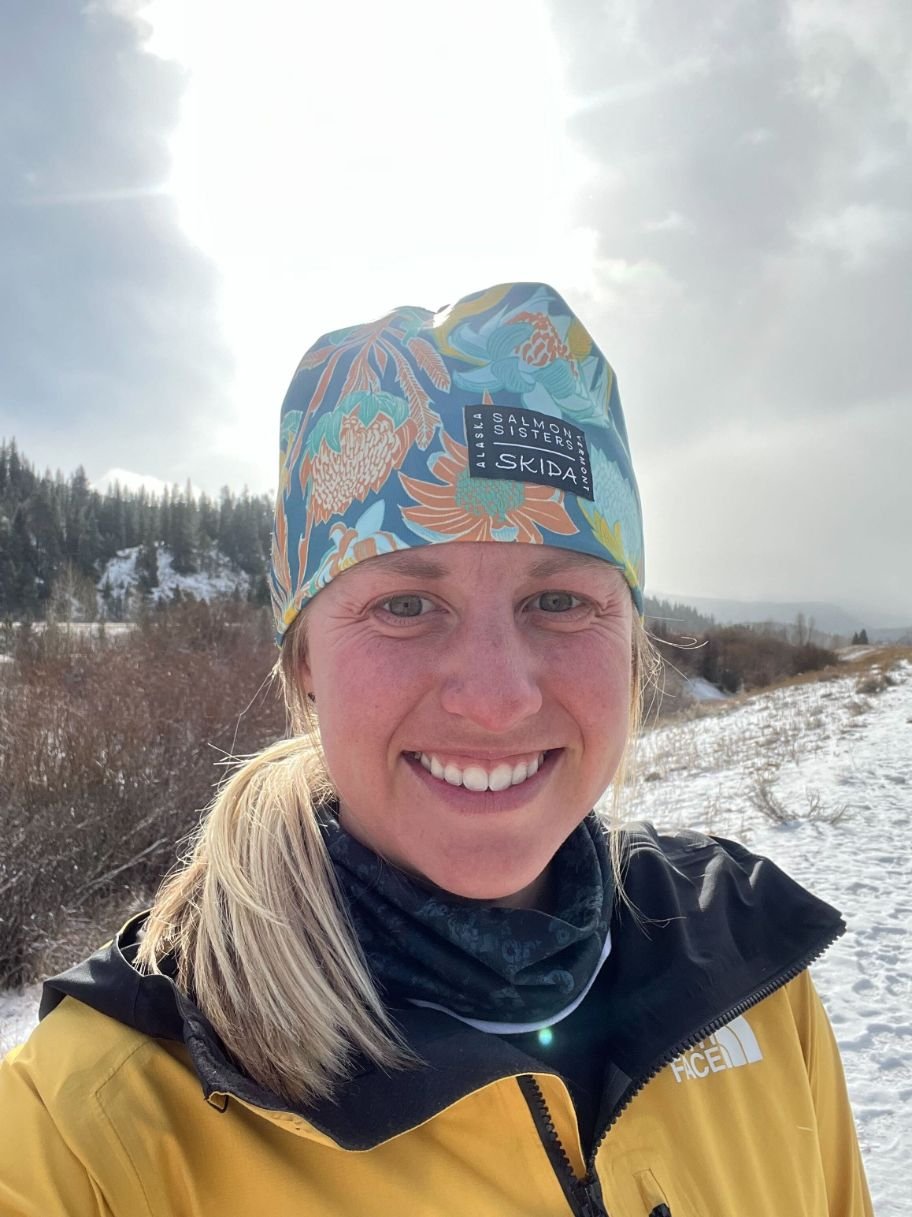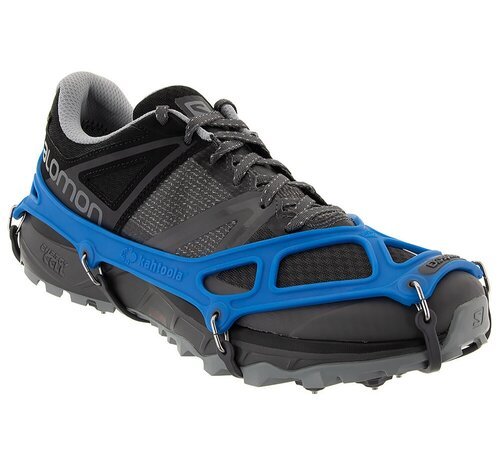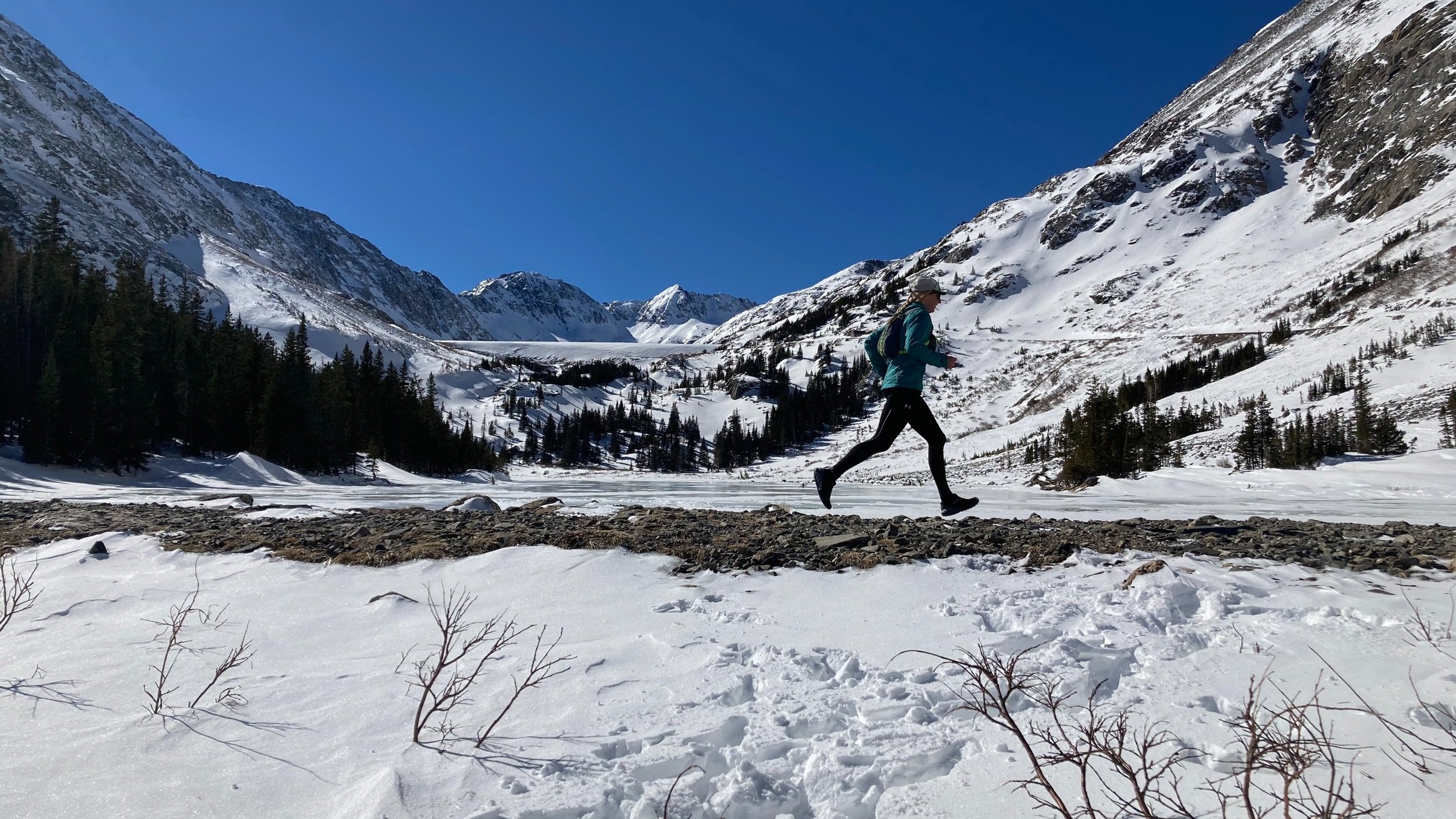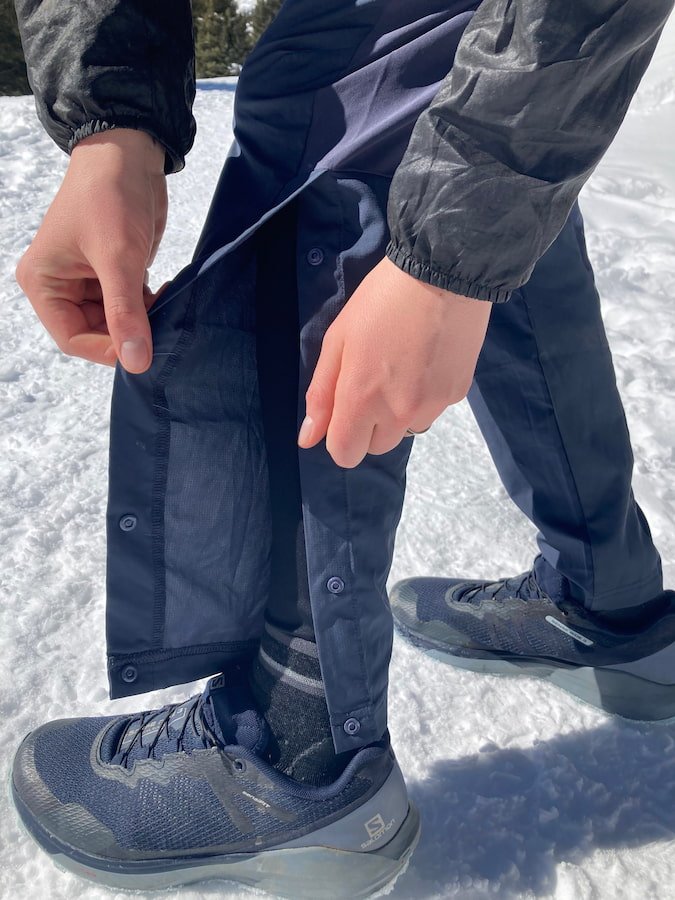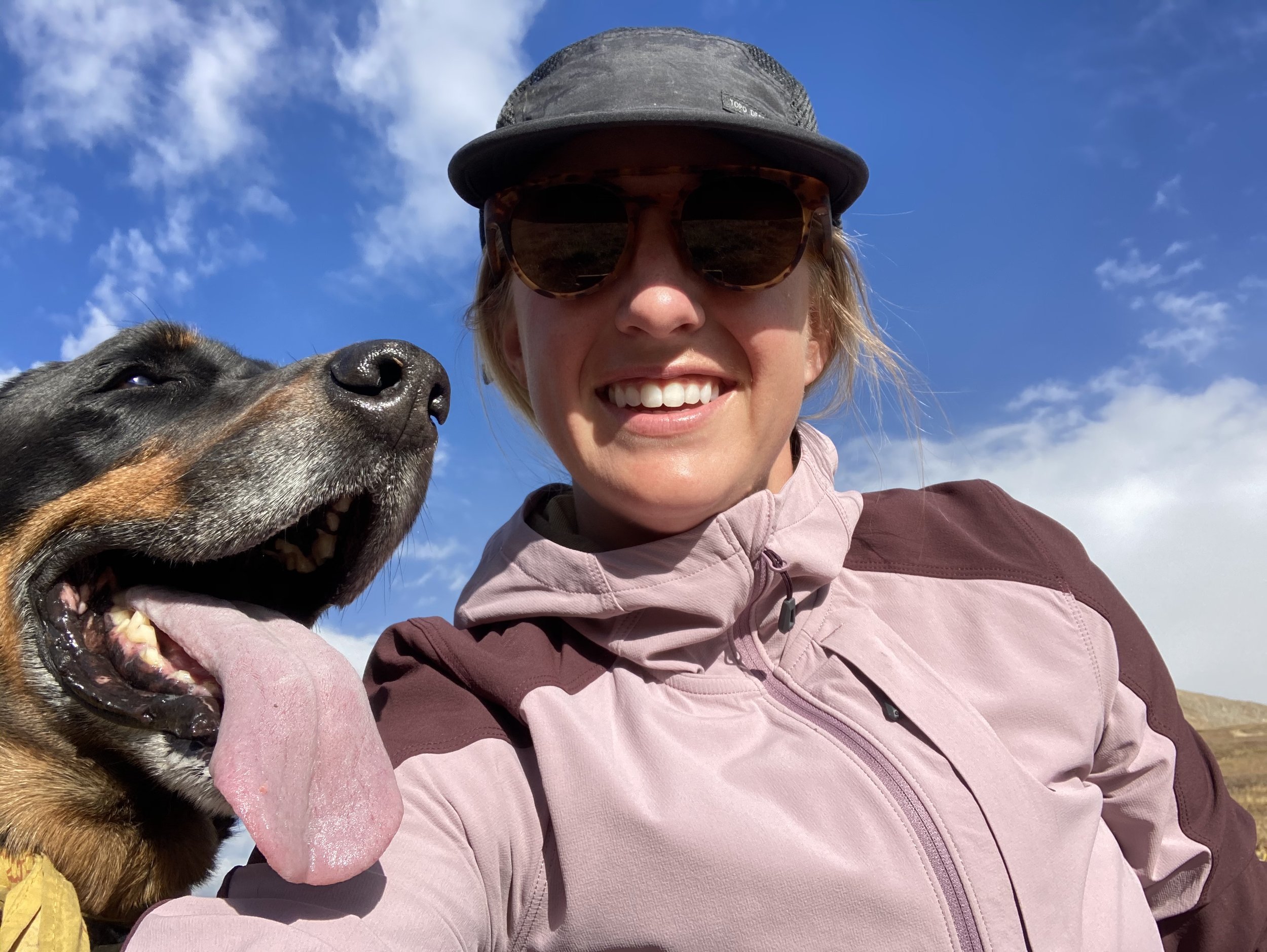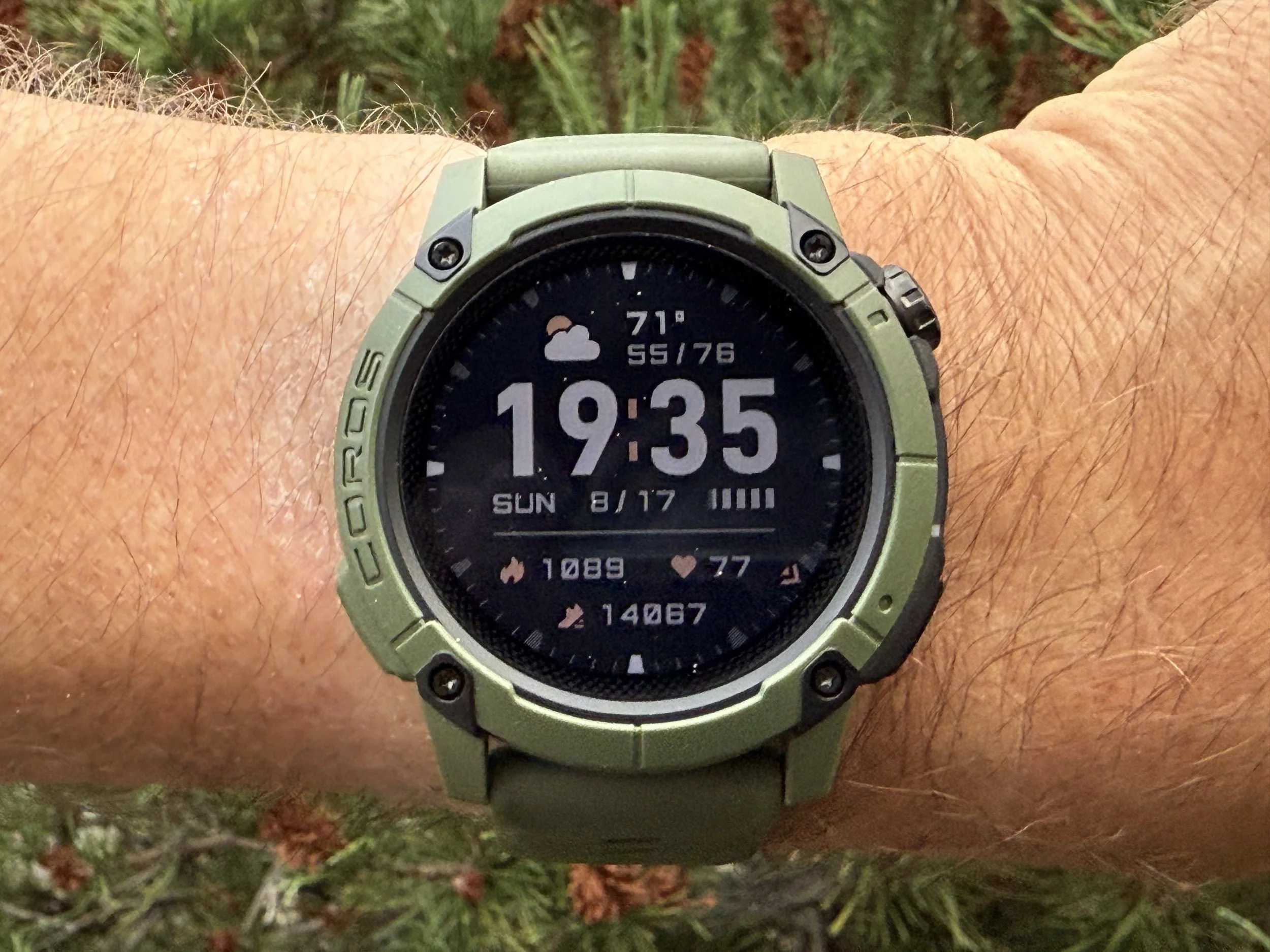Running gear for cold weather: Must-have essentials for winter runners
The Best Winter Running Gear to keep your running routine year-round
November 9th, 2024
Home > Gear Lists > Running
If you prefer to avoid the treadmill but want to lace up your running shoes for the winter months, it’s crucial to have the right cold-weather gear for the job.
Running in the winter is a different beast from the warmer seasons. You’ve got to stay warm while managing sweat and battle harsh elements like icy trails and windy, snowy weather.
I've personally tested dozens of pieces of cold-weather running gear to find the best for winter training. Along with other Treeline Review writers and testers, we developed this checklist of cold-weather running gear essentials.
I have been a gear tester and an avid runner for over a decade. I found my love for running in college when I ran primarily on the road.
After moving to Breckenridge in Colorado's high country several years ago, it didn’t take long to realize that trails are where I prefer to pound dirt.
I've run multiple half marathon road races and an alpine marathon in the San Juan mountains. I now log mountain miles year-round, even through the chilly, snowy Summit County winters.
You can learn more about winter running safety and tips in our How to Run in Winter guide. Our Best Running Accessories guide can also help you determine which running gear items are right for you.
We create reader-supported, objective, independently-selected gear reviews. This story may contain affiliate links, which help fund our website. When you click on the links to purchase gear, we may get a commission — without costing you an extra cent. Thank you for supporting our work and mission of outdoor coverage for every body! Learn more.
Cold Weather Gear Checklist
Treeline Review writer Katie Brown running a race in winter in Utah in the Salomon Sense Ride Gore Invisible running shoes. Photo courtesy Katie Brown.
Cold weather running CLOTHING
The Salomon Sense Ride GORE-TEX running shoes keep feet warm when making miles on the snow. Photo courtesy Stasia Stockwell.
Winter running shoes
what to look for:
While you could take your summer running shoes to the streets or trails when the snow starts to fly, it’s far from ideal and can even be dangerous if you lack good traction on your soles. There are a few key features to look for in a good pair of winter running shoes. GORE-TEX or other waterproof fabrics will help to keep your feet warm and dry; large, grippy lugs will offer better traction in snow and ice.
What we liked: the Sense Ride 5 with GORE-TEX Invisible Fit is a great all-around shoe for daily winter running. The Quicklace system is easy to use and dials fit nicely, and the lugs are just right — grippy on all types of terrain without being too bulky.
What we didn't like: the Quicklace system may not be for everyone, and those with especially wide feet may find this shoe to fit too narrow.
We think the Sense Ride GORE-TEX is the best running shoe for cold days due to its excellent fit, an aspect that is lost on many winter running shoe designs.
The non-GORE-TEX version of the Sense Ride won over our reviewer and testers in our story on the best women's trail running shoes and best men's trail running shoes. Salomon makes a waterproof GORE-TEX version of the Sense Ride for when the weather turns wet and snowy. Treeline testers have collectively put hundreds of miles on both the regular Sense Ride and during cold weather runs, the Sense Ride GORE-TEX.
SALOMON SENSE RIDE 5 GORE-TEX
MEN'S
WOMEN'S
The GORE-TEX version features the same comfortable, foot-hugging feel of the regular Sense Ride shoe, thanks to the SenseFit system and Ortholite insole. This system makes for a shoe that cradles your foot from the midsole to the heel. We find the GORE-TEX and regular version of the Sense Ride fit is essentially the same.
The main difference with the GORE-TEX version of this shoe is the upper construction. Underneath the mesh upper of the shoe is a waterproof membrane that fends off moisture while remaining breathable.
While many waterproof winter running shoes use a bootie construction for the waterproof membrane, GORE-TEX technology integrates the waterproof layer seamlessly, bonding it directly into the shoe. This technology makes for a better fit and adds breathability without sacrificing weatherproofing.
Along with their weatherproofing, we found the Sense Ride running shoes offer excellent traction on various surfaces. We’ve tested them on rocks, ice, snow, slush, and mud — including winter trail runs and shoulder season ridge scrambles in the mountains around Breckenridge, CO — and found they have excellent grip without the lugs feeling too aggressive.
The Quicklace system on the Sense Ride shoes is also a convenient feature. Some of our testers have spent multiple years running in different versions of this running shoe and love how easy it is to get the adjustments just right with this lacing system. While this type of lacing may not be for everyone, we generally prefer it over traditional laces.
Any pair of waterproof running shoes are bound to be a little heavier than ones that aren’t. But Salomon still keeps it light with this shoe at 8.7 oz and 10.8 ounces per shoe (women's and men's). (The non-GORE-TEX version weighs at 8.7 and 10.1 ounces for women's and men's.
For more information, read our in-depth full review of the Salomon Sense Ride 5.
The author running in Colorado with the North Face Flight Lightriser Futurelight jacket. Photo courtesy Stasia Stockwell.
Winter running jacket
WHAT TO LOOK FOR:
With winter running, layering appropriately is especially important. A good winter running jacket should be made of a waterproof-breathable material while being comfortable and lightweight to maintain a good freedom of movement.
What we liked: incredibly light, comfortable, and breathable for a weatherproof outer layer.
What we didn't like: this jacket isn’t cheap for a lightweight layer. The women’s version seems to have been discontinued and now can only be found used.
When running in the winter elements, you need protection that won’t weigh you down. For this, we love The North Face Flight Lightriser FUTURELIGHT jacket.
It’s a minimal, lightweight, weatherproof layer that maintains impressive breathability and comfort. It’s made with TNF’s FUTURELIGHT electrospun membrane, which is the wind and waterproof membrane the jacket is constructed with. This material is one of the best we’ve tested in the outer layer category since it’s one of the most comfortable and breathable weatherproof materials on the market.
The Lightriser is a minimal jacket that’s light on features, like pockets, but we prefer that to save weight. The jacket features a mesh pocket into which you can stuff it into when it’s not in use. It’s not quite as packable as other thin running shells, but you get excellent weatherproofing in exchange.
The North Face Flight Lightriser is our winner for Best Waterproof Men’s Running Jacket in our Best Men’s Running Jacket guide. For similar waterproof models in women’s sizing, see our Best Women's Running Jackets. If you don’t need a dedicated waterproof running jacket, you can get away with recommendations in our Best Lightweight Rain Jacket.
See our Tips for Running in the Rain guide for more suggestions on other ways to stay safe and dry.
THE THE NORTH FACE FLIGHT LIGHTRISER FUTURELIGHT
MEN'S
WOMEN'S
Treeline Review writer Trey French running in winter in Colorado in the Janji Groundwork tights. Photo courtesy Trey French.
Winter running tights
WHAT TO LOOK FOR:
You’ll inevitably want to ditch your split shorts when the cold rolls in. Running tights are ideal because they offer warmth and protection without causing chafing or sacrificing range of motion. We like leggings that are versatile enough to be worn mid-winter and during the shoulder seasons.
Not all tights and leggings are alike — look for leggings made of good wicking fabrics (not cotton) and a comfortable waistband that doesn’t slide down. A couple of functional pockets are the cherry on top.
What we liked: excellent fit and functional features make both of these tights one of our go-to’s for winter running.
What we didn't like: there’s no added insulation in these tights, like a fleece lining. They’re great for most winter and shoulder season runs, but something thicker (like the Patagonia Wind Shield running pants) is better if you're running on a particularly cold day.
We tested the Janji tights for our women’s and men’s winter running tights stories, and testers and writers agreed on both sides: These are some of the best cold weather tights for all-around winter running.
Both the men's and women's leggings offer just enough warmth and protection from the elements while remaining breathable and sweat and moisture-wicking for when you're working hard.
We love the fit and features of the Janji Groundwork and Trail Tight, too. These mid-rise tights offer light compression while remaining comfortable. They stay put on long runs; we rarely fuss with them during a workout.
Two side thigh pockets hold essentials without bouncing or weighing down the tights, and a rear stash pocket in the waistband is great for gels and snacks. These tights also have a reflective detail on the ankle and thigh for added visibility.
If your body runs cold or are running in extreme cold, check out these stories for even better insulated tights we like: Best Men's Running Tights and Best Women’s Winter Running Leggings.
JANJI RUNNING TIGHTS
MEN'S JANJI TRAIL
WOMEN'S JANJI GROUNDWORK
Treeline Review writer Trey French running on a dirt road in Colorado wearing the Patagonia Wind Shield Pants on a cold winter day. Photo courtesy Trey French.
Winter running pants
WHAT TO LOOK FOR:
Your apparel is going to differ greatly in the winter from summer, as long as you’re out running in cold and snowy conditions. You’ll need clothing that helps to keep you warm and protected from the elements. That means clothes that keep you protected from cold, wind, and precipitation, without prohibiting movement or causing you to overheat.
What we liked: we love these feature-rich running pants for their comfortable, running-specific fit and the weather protection they offer without being too warm for intense aerobic activity in cold weather.
What we didn't like: the swishy material is a little loud.
We reach for the Patagonia Wind Shield running pants for extra warmth and weather protection against particularly nasty winter weather. These lightweight softshell pants are tailored for a running-specific fit: almost tight-like at the hips and thighs but looser in the knees to allow for a comfortable range of motion.
While a pair of running tights are great for average winter runs, the Wind Shield pants are suitable for the days when the weather is less than desirable with wind and precipitation.
Stretchy softshell fabric with a DWR (durable water repellent) coating fends off wind and light precipitation while panels of breathable material (Capilene Cool on the backside and Mission Peak Tights fabric in the waistband) help to shed heat and wick sweat and moisture for when the pace picks up.
The Wind Shield running pants also feature a couple of bounce-free pockets for stashing a phone and other essentials and have a drawcord waistband to keep the fit secure.
Although they aren't always available, you can sometimes find the Patagonia Wind Shield pre-owned on REI's Re-Supply website or Patagonia's WornWear website.
PATAGONIA WIND SHIELD PANTS
MEN'S
WOMEN'S
Winter running headbands
WHAT TO LOOK FOR:
For winter running, it’s important to keep warm without overheating, which often means a full beanie is overkill. Look for a headband that does double duty by keeping your ears warm while wicking away moisture.
OUR CHOICE: SKIDA ALPINE HEADBAND
Treeline Review writer Stasia Stockwell wearing a Skida Alpine Headband on a winter trail run in Colorado. Photo courtesy Stasia Stockwell.
What we liked: this comfy and cozy headband is great for chilly winter days. We love all the fun patterns Skida offers.
What we didn't like: fleece lining can be a bit too much for warmer days. (But don’t worry, Skida makes an unlined version of this in the Nordic Headband.)
Running in the winter requires more attention to heat regulation. You must stay warm enough while still dumping the heat the body produces when you’re working hard.
Many days you’ll find that a full beanie is too much, but you still need to protect your ears from wind and cold temperatures. A fleece headband is often the ideal solution for this.
Wind-resistant face fabric is lined with Polartec micro-fleece for added insulation, easily making it one of our go-to headwear for any winter aerobic activity, from running to nordic skiing and ski touring.
SKIDA ALPINE HEADBAND
Treeline Review writer Trey French wearing winter running gloves on a particularly cold day in Colorado. Photo courtesy Trey French.
Winter running gloves
WHAT TO LOOK FOR:
You’ve got to keep your fingers warm, too, on winter runs, but a bulky mitten will almost always be overkill. Look for gloves that offer both insulation and breathability with a bit of weather protection, like a wind- and water-resistant fabric, too.
It’s also worth finding a pair that has touch screen compatibility on the fingertips, so you can cue up a playlist or make a phone call if needed.
OUR CHOICE: THE NORTH FACE DENALI ETIP GLOVES
What we liked: a great balance of warmth and breathability for winter running. Comfortable flexibility and touch-screen tips on all fingers make for a practical glove.
What we didn't like: paneling on the back of the hand helps a bit with wind resistance, but these gloves are not fully windproof or waterproof.
A good winter running glove should offer warmth without being too bulky; we prefer a midweight option for most days, and opt for a lightweight liner in the fall and spring. Some breathability is also important to avoid getting sweaty hands. It’s also good to have touch-screen compatibility in the fingers.
Our writer and tester for our Best Winter Gloves guide loved the midweight Denali Etip gloves for everyday winter running and hiking. Treeline Review writer Josette Deschambeault says, "Since they are made from inherently breathable materials, these gloves do best in colder temperatures when used during high-output activities (such as running or hiking)."
All five fingers are touchscreen compatible — the touchscreen conductivity is woven into the gloves, so rather than sport obvious finger pads, they look like regular gloves.
The Denali is the overall winner in our guide to The Best Winter Gloves due to its breathability and versatility in a number of winter outdoor activities, including running.
THE NORTH FACE DENALI ETIP GLOVES
Treeline Review writer Trey French (right) and his running buddies all wear a neck gaiter for running in cool weather. Photo courtesy Trey French.
Running balaclava / neck gaiter
WHAT TO LOOK FOR:
A balaclava or neck warmer is one of the most versatile and functional pieces of winter running gear. In fact, we find it useful for just about any winter outdoor activity. Look for merino wool or a blend of merino and synthetic fabrics, since the wool will stay warm when wet and is less prone to freezing up than other materials.
OUR CHOICE: BUFF MERINO LIGHTWEIGHT NECKWEAR
What we liked: the merino wool fabric is ideal for high-output winter activities.
What we didn't like: fabric is thin, so when the temps dip low, it’s necessary to pair it with a headband or hat to keep your ears warm. Buff also makes it in a midweight version.
This small piece of gear makes a big difference for winter running (and most any high-output activity in cold weather). A lightweight neck gaiter is essential for winter running to protect your face and neck from harsh cold, wind, and precipitation.
We prefer Buff’s Merino Lightweight Neckwear, primarily for the material. Synthetic materials freeze up in the cold, and wool is an excellent thermo-regulator. That means it will help keep you warm while wicking sweat and moisture when necessary.
BUFF MERINO LIGHTWEIGHT NECKWEAR
Running socks may get muddy on winter and early spring runs. We like a merino running sock with a high crew cut for winter. Photo courtesy Stasia Stockwell.
Winter running socks
WHAT TO LOOK FOR:
Once again, consider a merino wool blend here. We like merino socks for all seasons, but especially in winter to help keep our feet warm and dry, as merino can stay warm when wet better than other materials.
Although short-length running socks are great for summer, we prefer more coverage and higher socks for winter running.
What we liked: we dig the comfortable fit, minimal cushion, and blend of materials in these socks.
What we didn't like: they may feel small on the first wear, but don’t size up; they’ll break in.
A good wool sock is essential for winter running, and our favorite in this category is the crew sock from Smartwool. The blended material — 58% merino wool, 38% nylon, and 2% elastane — makes for a winning combo of warmth, wicking capabilities, and overall durability.
One major bonus to a wool sock is that it maintains its warmth when wet. And although it’s preferred to keep your feet dry when winter running, they’ll (probably) inevitably get wet at some point.
If you’ve got wool socks on, though, at least your feet are more likely to stay warm even though they may be wet.
For more recommendations for winter running socks, see our guide to The Best Running Socks.
SMARTWOOL RUN TARGETED CUSHION MID CREW SOCKS
MEN'S
WOMEN'S
The writer in the Skida Nordic Hat on a winter run.Photo courtesy Stasia Stockwell.
Winter running hat
WHAT TO LOOK FOR:
Consider a lightweight material here as opposed to something thick. Something sleek and minimal also keeps your gear streamlined for efficient running.
OUR CHOICE: SKIDA NORDIC HAT
What we liked: the thin fabric and design of this hat balances warmth and breathability. Plus, Skida has a gold mine of fun prints.
What we didn't like: a bit thin for extreme cold. If you need something a tad warmer, try the Alpine Hat, which is lined with Polartec fleece.
You need warmth and protection on your head when you’re running in cold and freezing temperatures, but more often than not, you’re working too hard to warrant a full-on beanie.
The Skida Nordic Hat is designed for cross-country skiing and other high-output winter activities, and we think that makes it the perfect winter running hat, too. The thin synthetic fabric wicks sweat and moisture while offering just enough barrier from the elements without causing you to overheat.
SKIDA NORDIC HAT
Treeline Review writer Stasia Stockwell wears a running vest while on a winter run with her dog. Running vests are useful all year-round but are especially nice in winter when you may need to add and remove layers as the weather changes. Plus, they’re great for storing dog treats. Photo courtesy Stasia Stockwell.
Winter running vest
WHAT TO LOOK FOR:
A lot goes into a running hydration vest; it’s an excellent and, in our opinion, essential piece of gear for long-distance runners (though it can be used for any length of run). It's an ideal place to carry water, snacks, and an extra layer. Plus, a vest can help keep the body temperature of your core warm without restricting arm movement or causing overheating.
For winter specifically, look for a vest that has the option for both bottles and a bladder, so you can use the bottles when the temps are below freezing.
OUR CHOICE: SALOMON ADV SKIN 12
What we liked: it’s easy to get a dialed and comfortable fit with this pack, and it performs well whether you’re carrying the bare minimum or have the pack fully loaded to capacity.
What we didn't like: the small plastic pieces incorporated throughout the pack lack some durability.
The Adv Skin 12 snagged the best overall award in our Best Running Hydration Vests story thanks to the fit, comfort, and features. This running vest comes in a men’s and women’s specific fit, and both are easy to adjust even more for individual preferences.
This 12-liter pack has just enough space for all the essentials — including water, snacks, and an extra layer — without being bulky or bouncy. One of the standout features of this pack is the “Adv Skin” mesh it’s constructed with. This material allows for the ideal amount of stretch in how the pack fits to keep it comfortable while mitigating bounce.
The vest has two soft bottles you can carry in the front shoulder pockets. It doesn’t include a hydration bladder but is compatible with one. We prefer bottles over a bladder when the temps are below freezing because bottles have less of a tendency to freeze than bladder hoses (even with an insulating sleeve). Many companies (like Nathan) offer insulated bottles that work with running vests, and that’s our go-to option for hydration on long winter runs.
Check out our full review of Salomon Adv Skin 12.
SALOMON ADV SKIN 12
Winter running top
WHAT TO LOOK FOR:
We the layer you wear directly against your skin, we recommend a long sleeve base layer made of a merino wool blend. Avoid anything too thick, because it’s always better to have layering options so you can maintain good sweat and moisture management.
What we liked: incredibly comfortable and well-designed for winter activities.
What we didn't like: it’s a bit spendy and can be difficult to find.
A good base layer is a crucial piece of cold weather running gear. It should keep you warm and dry, wicking sweat when necessary while maintaining some insulation. For this, we love the Mammut Trift Long sleeve, one of the winners in our base layer review.
This hybrid shirt is made with a blend of synthetic fabrics and merino wool. Thanks to this, you get durability and sweat-wicking from the synthetic and wool's warmth, thermoregulation, and odor control.
The Trift also has body-mapped construction, which means that areas that need extra insulation have thicker fabric, while areas that tend to get sweaty — like the armpits — have thinner fabric to dump heat easier. Sweat management is crucial in cold temperatures to avoid evaporative cooling, which can chill you and eventually lead to hypothermia if not managed.
The Trift is the best for snow winner in our guide to The Best Base Layers.
For more long-sleeve running shirt recommendations, read our guides to the Best Women's Running Shirts and Best Men’s Running Shirts.
MAMMUT TRIFT LONG SLEEVE
MEN'S
WOMEN'S
Treeline Review writer Dean Krakel swears by the Kahtoola EXOspikes for use around town is his snowy home of Crested Butte, Colorado (elevation of 8,900 feet). Photo courtesy Dean Krakel.
Winter Running Accessories
ICE TRACTION
OUR CHOICE: KAHTOOLA EXOSPIKES
If you spend time running on snowy and icy trails in the winter, a good pair of traction devices is a piece of gear worth considering.
For winter running, we like the Kahtoola EXOspikes, an award winner in our Best Winter Traction Devices story.
The EXOspikes are both lightweight and durable (two things that don’t often go together in the world of gear). One of the things our tester and writer of the traction review loved most about these is that they’re tough enough to be used on trails but minimal enough to run on slick pavement, too.
KAHTOOLA EXOSPIKES
Gaiters
OUR CHOICE: SALOMON TRAIL GAITERS
If you find yourself running through the snow in the winter, a pair of running gaiters can be essential for helping to keep your feet dry.
We love that our favorite running shoes, the Salomon Sense Ride, come in a waterproof GORE-TEX version, but it’s worth remembering that they’re running shoes and not high boots; they’ll stay dry—unless you get snow, ice, or water into the inside of the shoe. Running gaiters are great at stopping that from happening. Our top choice for these is the Salomon Trail Gaiters. They’re functional, durable, and work seamlessly with our favorite winter trail shoes.
Read more about favorite hiking gaiters.
SALOMON TRAIL GAITERS
For more gear to improve your winter running experience, check out our guide to the Best running accessories.
Running headlamp
OUR CHOICE: BIOLITE HEADLAMP 800 PRO
We all know that winter means not just colder temps, but also shorter days for most of us. If you’re running in the morning or the evening, it’s smart, if not necessary, to carry a headlamp.
Our favorite headlamp for running and one of the award winners in our headlamp review is the new BioLite HeadLamp 800 Pro, which won upon our Best Headlamp for Running in our Best and Brightest Headlamps guide.
The BioLite 800 Pro is our winner for Best Running Headlamp in our guide to The Best (and Brightest) Headlamps. It’s also the headlamp we recommend in our guide to Gear for Running in the Dark.
BIOLITE headlamp 800 pro
Running Sunglasses
OUR CHOICE: SMITH CHROMAPOP SUNGLASSES
Snow is highly reflective, so if you’re running in a snowy area that also sees plenty of sun (like Colorado), a good pair of sunglasses should always be in your kit. We prefer ones with polarized lenses because it gives more clarity and definition in all lighting conditions.
Our writer’s go-to choice for good lenses are Smith Chromapop sunglasses, which use the same technology as our overall winner in our Best Ski and Snowboard Goggles guide. Pick whatever style floats your boat, as long as you’re shielding your eyes from all those UV rays.
For more recommendations, including some more budget-oriented sunglasses, see our guide to The Best Running Sunglasses.
SMITH CHROMAPOP SUNGLASSES
Treeline Review tester Stasia Stockwell personally ran in winter gear items on snowy, Colorado trails to find the best winter running gear for our winter gear guides. Photo courtesy Stasia Stockwell.
How we tested
We’ve had several Treeline testers and writers take dozens of pieces of running gear to the pavement and trails through all seasons, including winter, to find the best cold-weather gear items out there. Hundreds, if not thousands, of miles between these testers have helped prove what works best and what doesn’t when temperatures drop. We tested gear across multiple states, from Colorado to Maine to Alaska to Washington, and in various conditions — from slick sidewalks to winter trail runs in deep snow.
The ability to easily put on and take off layers is essential for winter running. Weather can change quickly and it is easy to overheat on winter runs. Photo courtesy Stasia Stockwell.
How to layer
It may seem counter-intuitive, but it’s vital to keep yourself from overheating in winter. Sweat and moisture management is one of the best things you can do to stay warm, dry, and happy on winter runs. Proper layering is the best way to do this.
To layer your running clothes, we recommend starting with a long sleeve base layer. Have a light breathable jacket on hand for use as an outer layer when weather rolls in. However plan to take it off and rely on that base layer or mid layer if you start sweating too much.
Evaporative cooling happens when wind and dry, cold air pull sweat and moisture from your skin. It’s great in summer, but can make you dangerously cold in winter. This is especially true if moisture is not just from sweat, but from rain or snow. So, check the weather and be strategic with each layer you wear anytime you head out for a winter run.
Interested in running? Check out the Running Gear section:
What fabric and materials to look for
We’ve said it a few times here already, but we’ll say it again: Merino wool is one of the best fabrics for winter running apparel. Wool does an excellent job of wicking sweat and maintaining warmth when wet. Synthetic fabrics are also good. They typically wick well and dry fast but likely won’t be as warm as wool if they get wet.
What fabrics to avoid
One fabric you should always avoid for winter running is cotton — it may be warm when it’s dry, but it doesn't wick sweat, it takes a very long time to dry, and it will keep you cold when it’s wet.
SAFETY TIPS FOR WINTER RUNNING GEAR
Safety is important when choosing cold weather running gear to ensure a comfortable and secure running experience. Here are some key safety considerations:
Visibility
Winter running often means running with less daylight to spare, so being visible on the road and trails is especially important. Choose gear and clothing with bright colors and reflective detailing whenever possible.
In fact, it’s smart to carry a light or headlamp in the winter months, just in case. Check out our favorites in our guide to Best Running Lights.
Weather resistance
Weather can roll in unexpectedly in the winter months, depending on where you are. If you’re running in winter conditions, you’ll want gear that can stand up to the elements. Look for pieces that have some wind- and waterproofing (like DWR treatments) while remaining breathable.
Layering
Layering is key when running in the cold; you need to stay warm without overheating and sweating too much (all that sweat will eventually evaporate and make you cold). Pick base layers that wick sweat well and outer layers that are easy to shed and pack away when necessary. Wool is an excellent choice for base layers for winter running since it wicks sweat, deters odor, and stays warm when wet.
Footwear traction
Be prepared for snow and ice on the trails and roads when running in winter. Choose running shoes with good lugs and traction, and use lightweight traction devices when things get particularly slick and snowy.
Hand protection
While your core temp may stay warm when running in winter, your fingers may need some help. Wear lightweight gloves that are comfortable and breathable, but choose materials that will still stand up to cold weather and biting wind, such as breathable softshell material like that found in softshell jackets.
Head and face coverage
Depending on how chilly it is, you’ll likely want some head and face protection for winter running. Choose lightweight neckwear that wicks sweat while adding warmth. Hats can be great on particularly cold days, but often a headband that insulates the ears is best for keeping warm without overheating.
Moisture management
One of the best ways to stay warm while getting active in winter conditions is to stay dry. Lots of sweat or moisture next to your skin is bound to only make you cold. Wear enough layers to keep you comfy, but don’t overdo it and remember that with high-output activities like running, it’s best to start cold since you’ll warm up as soon as you set the pace.
Comfortable fit
A little comfort goes a long way when it comes to something that can be often uncomfortable at first, like winter running. Choose layers and gear that function well but that are also not too restricting or uncomfortable for your runs.
Hydration
While we may often feel less inclined to chug the water in winter than we do on a hot summer day, our bodies actually become more dehydrated when exercising in cold weather thanks to that cold, dry air sucking up all the moisture from our lungs. Stay on top of water consumption when exercising (running vests can help with this, while also offering space to stash extra layers) and be sure to pre-hydrate and rehydrate well before and after runs. For more tips on hydration, see our Hydration Tips for Trail Runners article.
Safety accessories
Certain accessories may be helpful for winter runs, like traction devices for your shoes for icy trails and a headlamp and reflective gear for runs in the cold and dark. Be sure to carry anything like this that’s necessary for the conditions on your running route.
Monitor the weather
Check the weather before going out, especially in winter. If a particularly bad storm is rolling in, or if the temps are simply too cold, save the outdoor run for a nicer day.
WHY IS WOOL A GOOD FABRIC FOR WINTER RUNNING GEAR
Wool is our preferred choice for cold weather running gear due to its ability to provide both comfort and functionality in chilly conditions. Here are several reasons why wool stands out as a preferred material for cold weather running:
Natural insulation
Wool is a natural insulator that will help to keep you warm, even when it gets wet (unlike many synthetic fabrics or other insulators, like down).
Breathability
Wool also offers breathability; it’s insulating, but it won’t trap heat like a shell jacket but instead allows for some airflow through the fibers.
Moisture-wicking
Wool is excellent at wicking moisture off the body. When you start to work up a sweat, it wicks well and won’t become water-logged and cold like cotton.
Temperature regulation
One particularly special thing about wool is its ability to regulate temperature so well. Yes, it’s an insulator, but it will also help to cool you when you need it.
Odor resistance
Wool is far better at resisting odors than synthetic fibers. While your synthetic base layers will probably smell pretty ripe after even one short run, wool ones can often be worn multiple times before needing a wash. This is because wool is naturally antimicrobial.
Soft and comfortable
Not all wool is created equal, and for outdoor activities merino wool is usually the best option. This wool is softer to the touch and incredibly comfortable (read: not scratchy and abrasive like some might imagine with wool).
Quick drying
Wool dries much quicker than many natural fibers, like cotton, making it a great option for high-output winter activities like running.
UV Protection
While many other fibers have to be woven in a specific way to offer sun protection, wool naturally absorbs UV rays, offering a barrier to your skin.
Durability
When properly cared for, wool garments can have great longevity. These natural fibers are built to last and to stand up to the elements.
Environmental sustainability
Unlike synthetic fabrics, which are often made with plastic derivatives, wool is a natural fiber that’s better for both your body and the environment. Just be sure that the wool in your garment is ethically and sustainably sourced.
Versatility
Because wool is both warm and has great temperature regulation, and thanks to its odor-resistant properties, it’s a great material that can be used for outdoor activities in all seasons, from the hottest days of summer to the most frigid winter runs.
Stasia Stockwell in the mountains with her best friend. Photo courtesy Stasia Stockwell.
About the author / Why you should trust us
Stasia loves to lace up and hit the trails no matter the season. She’s run road and trail races, including the Silverton Alpine Marathon in southern Colorado. Living at 10,000 feet in the Colorado mountains, running through snow and ice is no surprise for her, even in the summer. Years of running along mountain trails and ridges inform her gear testing and reviewing.
A true mountain dweller, Stasia feels far more at home on a high alpine ridge than on a busy city street. She's worked as a backpacking guide in Southeast Alaska and has written for outlets like Backpacker, REI Co-op Journal, and The Dyrt, among others.
Stasia is a lifelong skier, mountain biker, and trail runner passionate about lowering barriers to entry for outdoor sports. She hopes to inspire people to love and respect the wild natural world through her work.
More of her work and adventures can be found on her website.
To see all Stasia’s Treeline articles, see her author profile.

